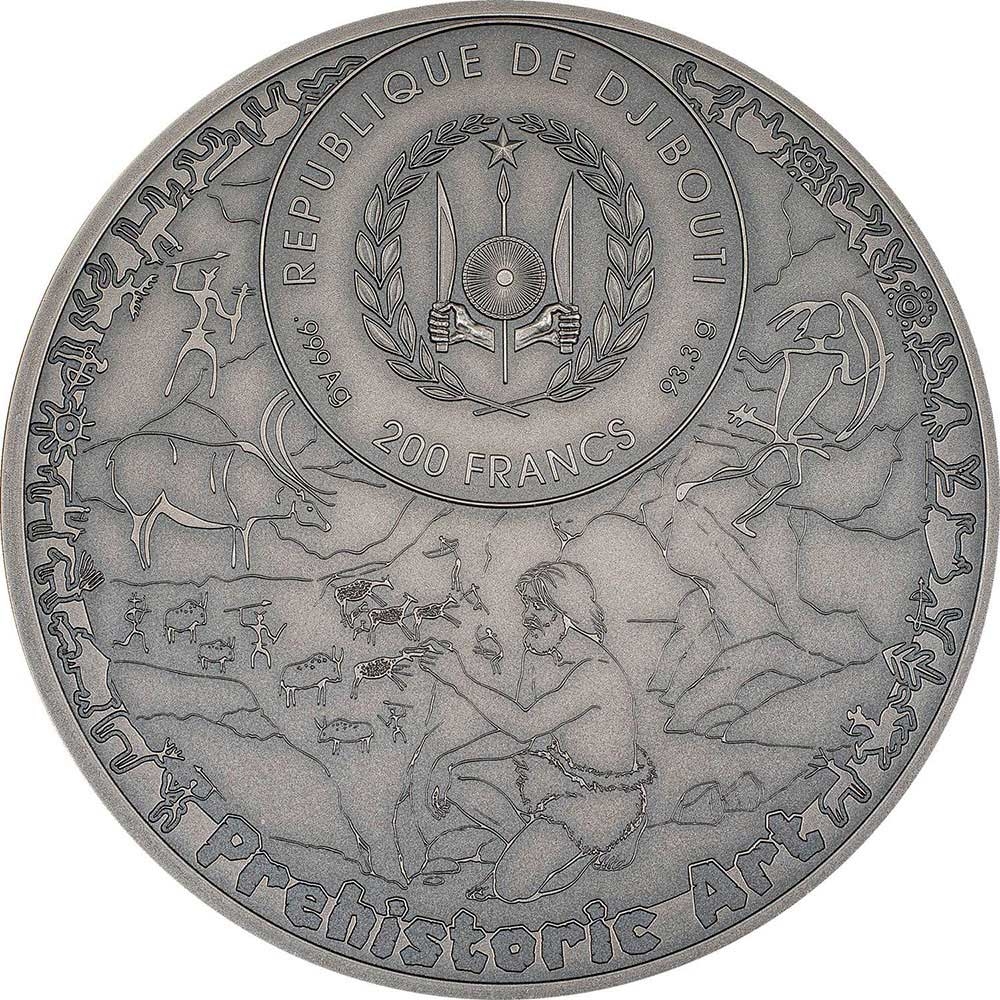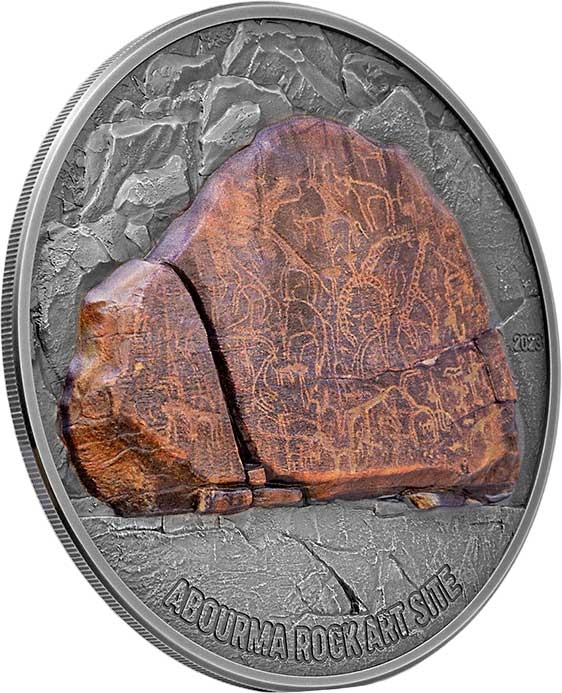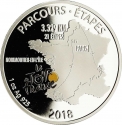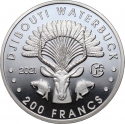You are about to finish your registration. Please check your mailbox (including spam folder). There should be a letter with a confirmation link. Check setting to make sure that your e-mail address is correct.
Send letter againDescription
Djibouti, formally known as the Republic of Djibouti, is situated in the Horn of Africa. It shares borders with Somalia to the south, Ethiopia to the southwest, Eritrea to the north, and is surrounded by the Red Sea and the Gulf of Aden to the east. The country covers an area of 23,200 km2 (8,958 sq mi).
Obverse

|
Depicts the national arms within the wreath, country name in French above, metal, purity, weight and denomination below with images of prehistoric people carving rock art and painting cave paintings, inscription below. REPUBLIQUE DE DJIBOUTI |
|---|---|
Reverse

|
Depicting "The Zoo," a notable rock formation within the Abourma Rock Art site, surrounded by other rocks in the background, with an inscription below and date on the right. 2023 |
| Edge |
200 Francs
Prehistoric Art
Abourma Rock Art
Subscribe series
KM# 131
Prehistoric Art
Abourma Rock Art











